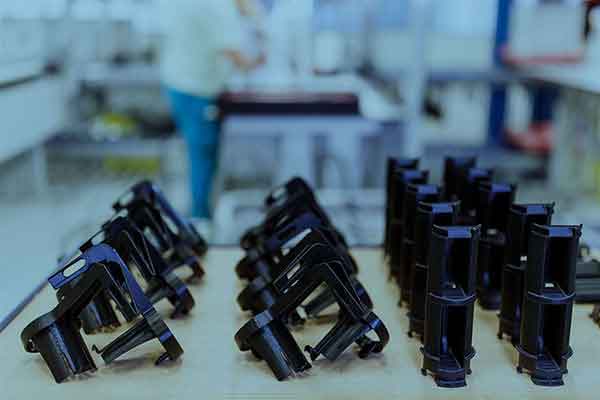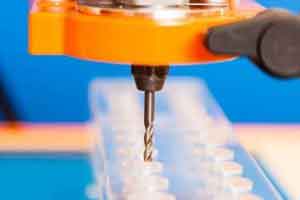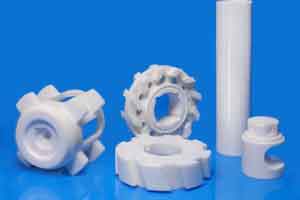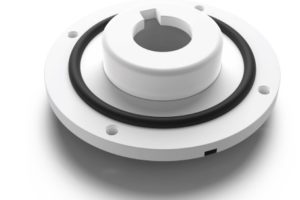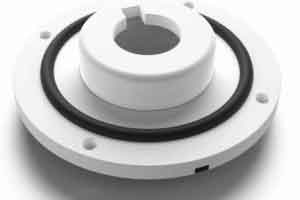RapidDirect, an on-demand manufacturing specialist, offers tips on when it’s better to use a professional service instead of fabricating in-house.
Rapid prototyping processes like additive manufacturing have democratized manufacturing, allowing businesses to make vital components without leaving the office, laboratory or workshop. Whether for prototypes or the occasional end-use product, 3D printing has enabled more and more designers and engineers to do it themselves, saving time and money by keeping things in-house.
For this and other reasons, it may well make sense to carry out prototyping or manufacturing in-house.
For one, there can be huge time savings: fabricating a part under your own roof cuts out the time needed to find a manufacturer, ask for a quote, wait for the part to be made and then, after all that, wait for it to be delivered.
There’s also the hands-on nature of it: by 3D printing or hand-crafting something yourself, you can see if any changes need to be made — before, during or after fabrication. By outsourcing the job, it’s harder to keep tabs on progress until the part is shipped back to you. By that point, it may be too late to rectify an error.
And finally, there’s the small matter of price. By fabricating in-house, you pay for the material, the machine’s power usage, and that’s about it. No fees are paid to a third party, and those savings could potentially be put to use in other areas.
Sounds like a clear-cut choice, right?
Well, not exactly. Although popular in-house machines like 3D printers are some of the most DIY-friendly manufacturing tools — low-end models can be affordable and relatively easy to operate — there are many occasions when outsourcing on-demand manufacturing to a professional service makes more sense, whether in terms of quality, efficiency, value or all three.
These are some of the situations when you should outsource on-demand manufacturing to a professional service.
Range of processes
Using a professional service for on-demand manufacturing opens up a surprising range of manufacturing possibilities.
Before on-demand manufacturing became a common method of fabrication, it would be expensive or even impossible to order small quantities of parts made using CNC machining, injection molding and other established processes. For small quantities, it would not have been in the manufacturer’s interests to carry out the job.
Today, on-demand manufacturing through a professional service gives businesses access to high-end machinery and skilled operatives without a premium price or a high minimum order volume. It is virtually impossible to operate CNC machines or injection molding equipment within a small business environment, so the ability to outsource through on-demand manufacturing can be a game-changer.
The ability to leverage services like CNC machining and injection molding in small quantities is thanks to the work of the service provider, which is able to find appropriate manufacturing partners for specific orders, generally ensuring that the manufacturer is local to the customer and eliminating risk on the manufacturer’s side.
3D printing beyond FDM
When people talk about 3D printers outside of an industrial context, they are generally referring — intentionally or otherwise — to Fused Deposition Modeling (FDM) 3D printers. FDM printers spearheaded the consumer 3D printing boom of the early 2010s, with brands like MakerBot suggesting that 3D printers could revolutionize personal manufacturing.
FDM printers have indeed made a huge mark on manufacturing, but their limited scope and efficiency is reflected in the dwindling interest in consumer-level desktop 3D printers. Some of the most powerful additive manufacturing machines — those that can print metal, for example — are found outside of the FDM bubble, and these more powerful machines are not the kind of printers you can set up in an office next to your computer.
So here’s the dilemma: FDM 3D printers are a great way to quickly make things in-house, but they are limited in terms of their abilities. If your business needs high-quality printed parts, perhaps made from liquid resins or nylons, or multicolor parts made with PolyJet technology, then printing in-house becomes a much harder (and more expensive) task.
Providers of on-demand manufacturing services can connect businesses with 3D printing bureaus equipped with the machinery, space and the skill to carry out Selective Laser Sintering, PolyJet 3D Printing and other advanced 3D printing processes. Because of this, outsourcing is sometimes the only choice for advanced projects.
Scaling up
Of course, using professional on-demand manufacturing services provides customers with more than just a range of technologies. One of the biggest advantages of using a third-party manufacturer is the ability of such companies to handle projects on a large scale.
While in-house equipment is often sufficient for making one-off prototypes, it is often insufficient for producing multiple iterations in a short timeframe and will likely struggle even more with the prospect of short-run production.
Desktop 3D printers, for example, are not known for their speed. An FDM printer in an office can take several hours to print a small object. Worse still, things don’t get much faster if you print in bulk: while manufacturing processes like injection molding take advantages of economy of scale — it gets faster and cheaper the more units you make — 3D printing in-house offers no such benefit.
The best methods for speeding up the manufacturing process? Use a high-speed machine, use a large machine that fabricate multiple units at once, or use multiple machines at the same time. Few of these options are available to businesses fabricating in-house, but all are viable options for professional service providers. When large quantities are needed and when time is of the essence, it is often best to outsource.
Minimizing risk
For many businesses looking to start making parts or prototypes, a dilemma often arises in which the company must choose between using a professional on-demand manufacturing service or investing in its own equipment, such as a 3D printer. And in many instances — especially those in which advanced technologies and large-scale manufacturing are not required — investing in a 3D printer can be a more cost-effective long-term strategy.
However, for startups and low-turnover companies, making that investment carries significant risk. If something goes wrong, such as a large batch of products becoming defective or an investor dropping out, the cost of paying off the 3D printer could ultimately become a huge drain on resources.
So while ordering parts from a professional company like China Medical CNC Machining Inc. may come with a higher unit cost for certain jobs, the approach presents considerably lower risk, especially for young companies. (Additionally, the higher quality of professionally made parts may help startups when they present their products to investors.)
This doesn’t have to be a long-term strategy, of course. Businesses can order from a service bureau until they are in a strong financial position, after which they might consider investing in their own manufacturing equipment. Until that moment, however, outsourcing to a professional service is a low-risk route to quality parts.
Contact RapidDirect to learn more about requesting on-demand manufacturing services from a professional service provider.
Share on social media...
Tags
Popular Topics
1
Understanding Plastic Fabrication Processes: A Complete Guide
Ayotomiwa Omotosho13 Feb
2
Ceramic CNC Machining: Another Option for Custom Manufacturing
Oluwafemi Adedeji13 Feb
3
The Overmolding Design Guide You Must Never Forget
Oluwafemi Adedeji13 Feb
4
What You Need to Know About the Overmolding Process
Paul Richard05 Feb

